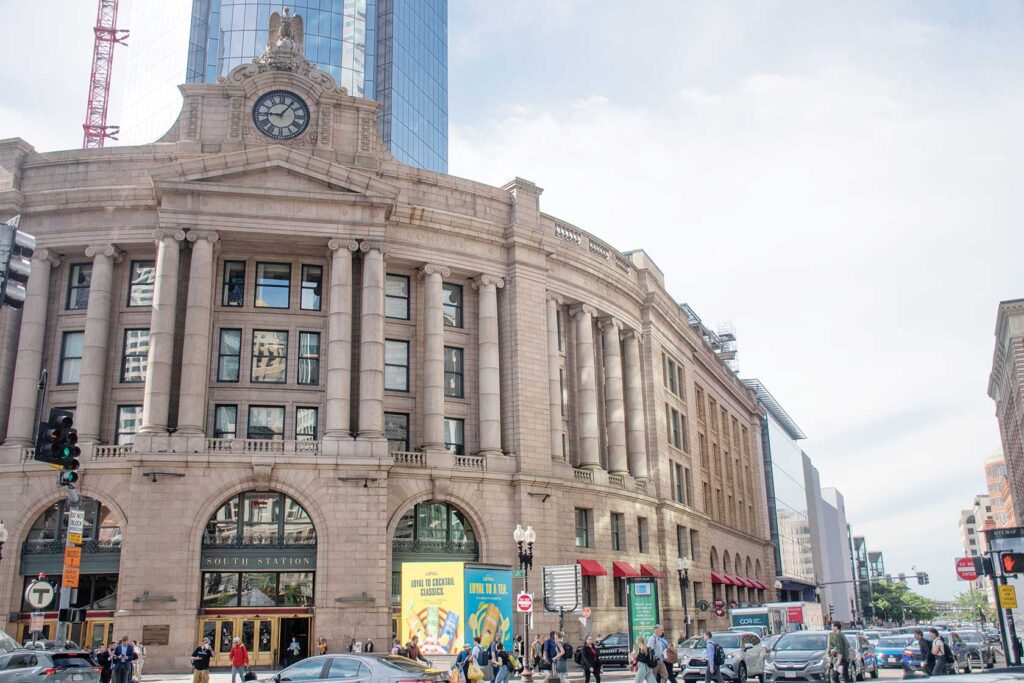
As the state looks to transition to clean energy sources, with a goal to reach net-zero carbon emissions by 2050, community solar programs have been touted as a way to link renters and other residents who can’t put panels on their roofs to the technology.
That system, however, has been challenged by a complex billing system that community solar providers say creates barriers.
A new order, released last month by the state’s utility regulatory agency, attempts simplify that process by creating new community solar options directly through the companies and programs where residents get their electricity.
James Van Nostrand, who serves as chair of the Massachusetts Department of Public Utilities, which issued the order, said the kind of community solar offerings that are supported in the decision can be key for creating access for households that otherwise can’t make use of the energy source.
“Community solar is a big deal in terms of being able to pick up the folks who don’t own their own residence, right? The access that community solar enables is huge,” he said.
Advocates for the technology have pointed to a dual billing model, where customers pay one bill to the community solar provider and another to their electricity supplier — on which they receive a discount in the form of solar credits — as one barrier that limits access to the programs, especially among low-income customers.
Other challenges in the application process and some requirements around credit checks further prevent access.
The new DPU guidelines set up municipal aggregation programs — programs where municipalities buy bulk electricity and to sell to residents — as well as Eversource, to run low-income community shared solar programs in the state.
State officials expect that the new changes will help close gaps in access and bring solar to more low-income households.
A survey by the Department of Energy Resources found that low income solar programs made up only 2.5% of submitted and qualified solar capacity under its Solar Massachusetts Renewable Target, or SMART, program — the state’s efforts to support and grow solar energy in Massachusetts.
Approval for linking low-income community solar to municipal aggregation programs is a major step for Boston, which has long aimed to incorporate solar into its Community Choice Electricity program.
Under its plan, as described in the state’s order, it would take an approach that is different from the traditional community solar model, in which a resident signs up with a provider and gets all the solar energy credits generated from the portion of a project that they pay a monthly fee for.
Instead, the city would partner with a solar developer, and all the savings generated by that agreement would be split, automatically, between all low-income customers in the municipal aggregation program.
“I think the attraction of this approach is that the work is really done on the city side — there’s not much that the customer has to do,” said Aladdine Joroff, Boston’s director of climate policy. “The city makes the arrangement and this discount just appears on everybody’s bills without having to individually sign up to participate in getting credit.”
That plan has relatively long roots. In late 2020, when the city first announced its Community Choice Electricity program, it included intentions to incorporate solar into its municipal aggregation offerings, using the model that was described in the new DPU order.
At the time, the city intended to partner with solar provider NextGrid Inc., which would build the solar projects. The DPU ultimately shut the plan down, citing the need for additional levels of approval.
When Boston first announced the plan, the city estimated it would bring $72 of savings to the average low-income customer. Joroff said the city doesn’t have an updated estimate now that the new DPU order has been released.
Alongside Boston, three other municipal aggregation programs in the state have expressed interest in incorporating solar offerings.
Charlie Harak, an attorney with the National Consumer Law Center who focuses on energy issues, said the inclusion of municipal aggregation programs was a “very beneficial part of the decision.”
The Cape Light Compact — a coalition of energy services organizations in the 21 towns on Cape Cod and Martha’s Vineyard — would make a deal with a solar provider and apply any subsequent discounts to all low-income customers in its municipal aggregation program, as in Boston’s plan.
Proposals from Chelsea and Newton floated the potential to follow the same model, or to alternatively use a credits system that is closer to a traditional community solar model.
As described in the order, the Boston plan, along with the Cape Light Compact plan, would bring reduced rates to all low-income residents in the aggregation program, but wouldn’t prevent them from signing onto an additional community shared solar program.
But change isn’t coming immediately. The June order made it clear that municipal aggregation programs will be able to offer low-income community solar, but the DPU has yet to define the specifics of how that will work.
Part of that is slowed by other agency processes. In August 2023, the department opened a different docket — number 2367 — to revamp how municipal aggregation operates in the state.
Joroff described that docket as an attempt to better balance the program’s dual goals of transparency and flexibility.
Van Nostrand said clear structures for how the municipal community solar offerings will work still need to be developed in the coming months, pending, in part, the completion of that municipal aggregation reset. He said he’s hopeful it can have big impacts, though, once those specifics are determined.
“We’re on the verge of really opening things up,” he said.
Around the same time the state announced its new SMART guidelines, consultants for municipal aggregation programs in the state had just come to a consensus around some of the changes, a major step in moving toward issuing an official order around the revamp of those programs, Van Nostrand said.
A specific timeline around what happens next — and how municipalities can move from the simple permission described in the June order to actually implementing low-income community solar as part of their electricity aggregation program — remains to be seen, but Van Nostrand said ironing out those specifics is going to be a top priority. He said he’d be surprised if it wasn’t done by the end of the year.
The order also addresses the ability of distribution companies, such as Eversource and National Grid, to operate their own low-income community solar programs.
The state anticipates the distributor-run programs will be able to close gaps in solar access. According to the order, Eversource serves as the distributor for 33% of the state’s affordable housing stock, but only 7.5% of solar providers under the SMART program serve affordable housing in that area.
Under its decision, the DPU approved Eversource’s plan. That proposal described an opt-out model where customers would be automatically enrolled, and created a system with simplified billing that doesn’t require participants to pay two separate bills for the community solar program. Under it, customers would receive benefits partially as a credit on their electricity bill.
The distributor estimated administrative costs for the program at $7.4 million over its planned 20-year lifetime.
The plan from National Grid was denied, with instructions to alter aspects of the plan. That proposal didn’t include an opt-out model, and increased administration needs — with costs estimated at $24.7 million.
Van Nostrand pointed to work that National Grid has done in other states, like New York, that he said he thought should be implemented here, but expects that those adjustments can be addressed quickly.
“There’s probably some good takeaways [from other states] that could be implemented in Massachusetts, so we weren’t ready to approve the National Grid proposal,” he said.
Through the new program, Eversource said, it could have significant impact for low-income households. According to the order, the distributor estimated that its low-income community solar offering could offer over $300 million in savings to its customers who participate.
Parts of Eversource’s proposal, like the opt-out system that requires residents to say they don’t want to participate, rather than asking them to join, led to the approval of the company’s proposal, Van Nostrand said.
“To us, it’s all about simplifying the enrollment process, and our takeaway … was we think they’ve accomplished that,” he said.
Applications processes that have the potential to confuse residents or hold them up with credit checks can keep people from accessing solar programs, Harak said.
“It removes a barrier that is common in almost every low-income program, which is the application process,” Harak said. “The application process is simply if you don’t opt out, you’re in.”






